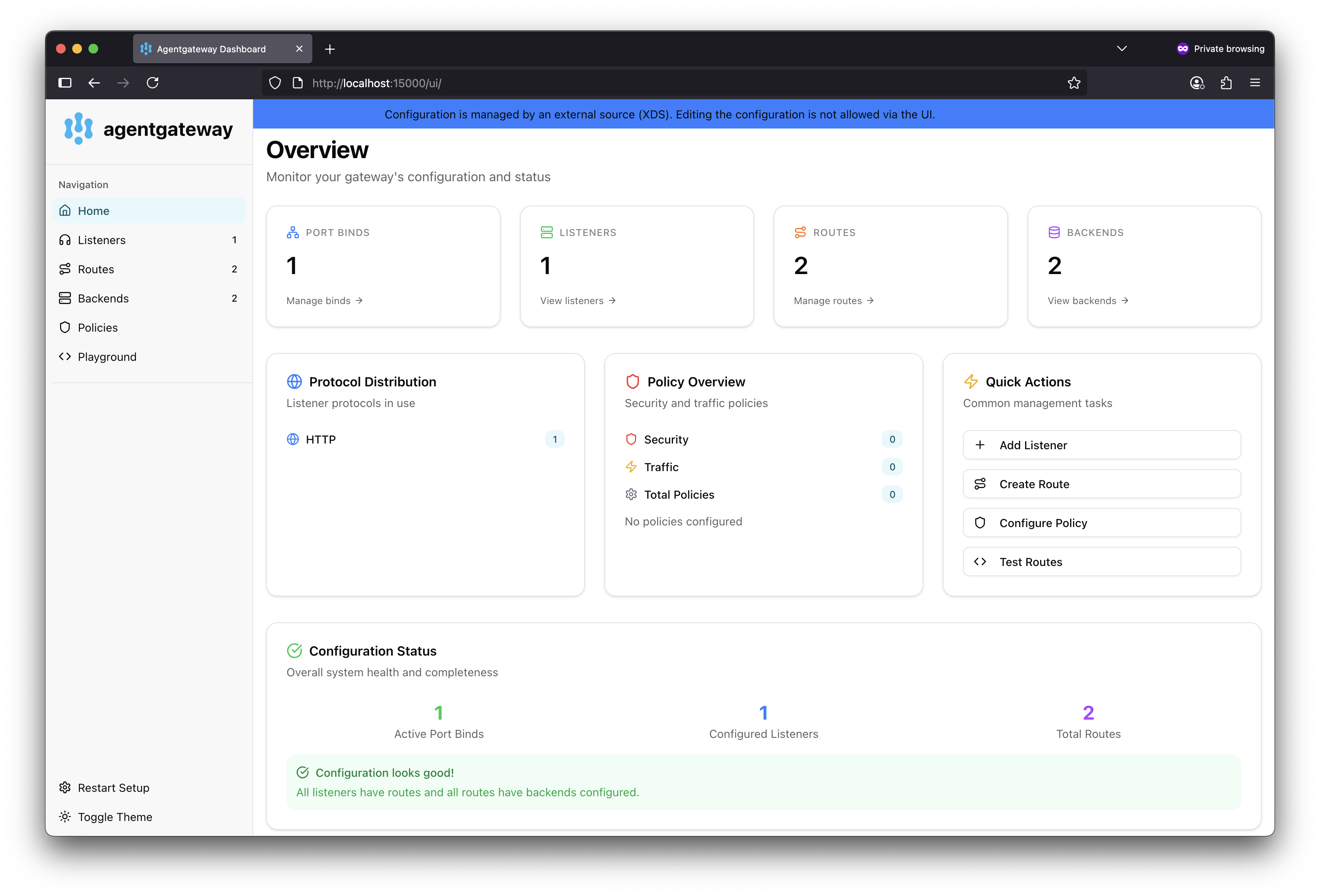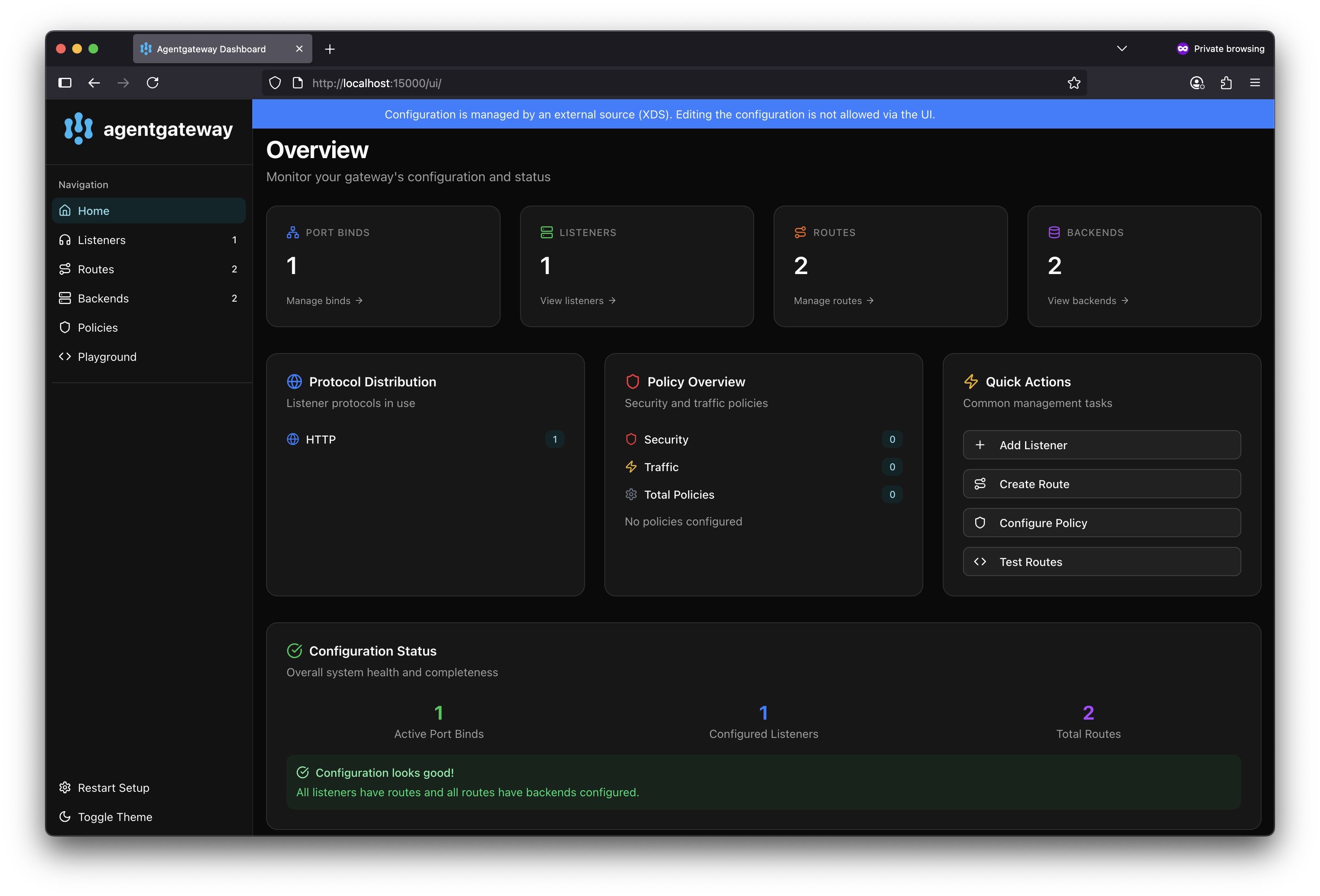User interface
Review your agentic networking resources in a user interface (UI). Choose from the agentgateway UI or MCP Inspector.
Before you begin
-
Follow the Get started guide to install kgateway with agentgateway enabled.
-
Make sure that agentgateway is enabled in kgateway.
helm get values kgateway -n kgateway-system -o yamlExample output:
agentgateway: enabled: true
Launch the agentgateway UI
Agentgateway includes a read-only user interface (UI) that you can use to view your agentgateway resources.
-
Find the agentgateway proxy that you want to view resources for.
kubectl get pods -A -l app.kubernetes.io/name=agentgateway -
Enable port forwarding to the agentgateway proxy on port 15000.
kubectl port-forward -n default $(kubectl get pod -n default -l app.kubernetes.io/name=agentgateway -o jsonpath='{.items[0].metadata.name}') 15000:15000 -
In your browser, open the UI at
http://localhost:15000/ui.
Agentgateway UI landing page 
Agentgateway UI landing page
Nice job! Now you can use the UI to explore your agentgateway resources. For more information about these resources, see Agentgateway resource configuration.
MCP Inspector
MCP Inspector is a popular tool for testing and debugging Model Context Protocol (MCP) servers, including agentgateway.
For more information about installing and using the tool, see the MCP Inspector documentation.